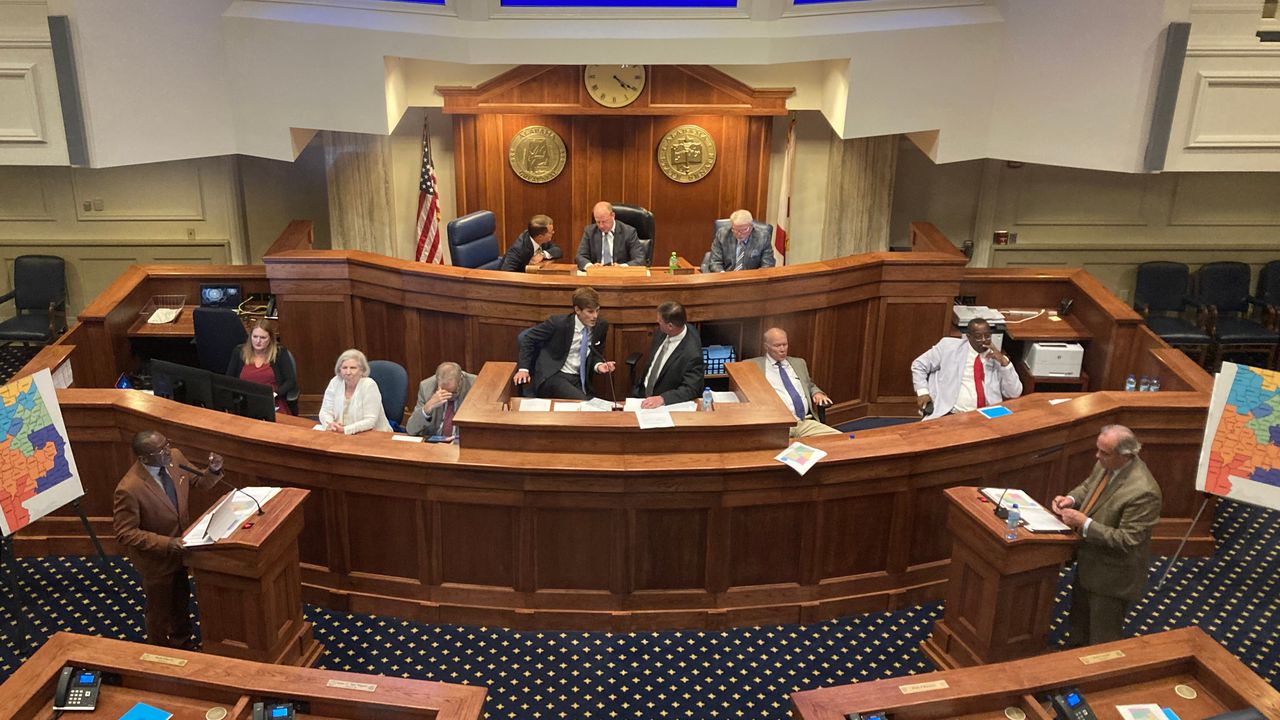Redistricting: Senate approves map with 1 majority Black district
The Alabama Senate on Wednesday passed a new congressional map as mandated by the U.S. Supreme Court, which found that Alabama’s current map most likely violates the Voting Rights Act.
Only one of Alabama’s seven districts has a Black majority population, even though one-fourth of the state’s residents are Black. The Supreme Court, affirming a ruling made last year by a three-judge district court, found that the map diluted the influence of Black voters.
The map approved by the Senate on Wednesday does not add a second majority Black district. Democrats opposed the plan, which passed by a vote of 24-8. The Republican majority in the Senate voted down several alternatives proposed by Democrats. The plan passed by the Senate is similar to a map the House of Representatives passed earlier on Wednesday.
Both plans leave District 7 as the state’s only majority Black district, as it has been since 1992.
The three-judge court said to fix the Voting Rights Act violation, Alabama would need a second majority Black district or one that is close to majority Black to allow Black voters an opportunity to elect a candidate of their choice.
Sen. Steve Livingston, R-Scottsboro, sponsor of the Senate plan, said he believes the map meets that requirement because it increases the Black voting age population in District 2 from 30% to 38%.
“The question is, what is opportunity there,” Livingston said. “I think everybody has a different interpretation of what opportunity is. Some of the plaintiffs’ plans, we’re talking 40, 45%. So it’s 38 there. That’s where we could settle.”
Senate Minority Leader Bobby Singleton, D-Greensboro, said a Democrat could not win in District 2 as it is redrawn under Livingston’s map. Singleton said the Legislature is missing an opportunity to pass a plan that complies with the court order and recognizes the need to give Black voters a stronger voice in determining their representation.
Singleton said he believed the real purpose of the Republican-backed plan is to generate another court challenge that could potentially result in a ruling that weakens the Voting Rights Act. Livingston said that was not his purpose.
The National Redistricting Foundation, an affiliate of the National Democratic Redistricting Committee, issued a statement saying the plans that passed the House and Senate would be challenged in court.
“The maps passed by the Alabama House and Senate are in flagrant disregard of the Alabama district court’s order to enact a map with two districts in which Black Alabamians can elect a candidate of their choice, and the Supreme Court’s decision affirming the lower court,” Marina Jenkins, executive director of the NRF said.
The NRF supports a map developed by the plaintiffs who prevailed at the Supreme Court on their Voting Rights claim. It would have made District 2 a second majority Black district, at slightly more than a 50% Black voting age population. Democratic lawmakers offered that map in both the House and Senate today, but it was rejected.
Now that the House and Senate have passed different maps, lawmakers faced the task of finding an agreement on a map that passes both chambers. The maps will be considered in committees on Thursday with the goal of being in position for final passage on Friday.
The three-judge district court gave the Legislature until Friday to approve a map, which would be used in next year’s elections if it survives court challenges.
Read more: Black lawmaker says redistricting vote ‘dehumanizes a people, a struggle’
